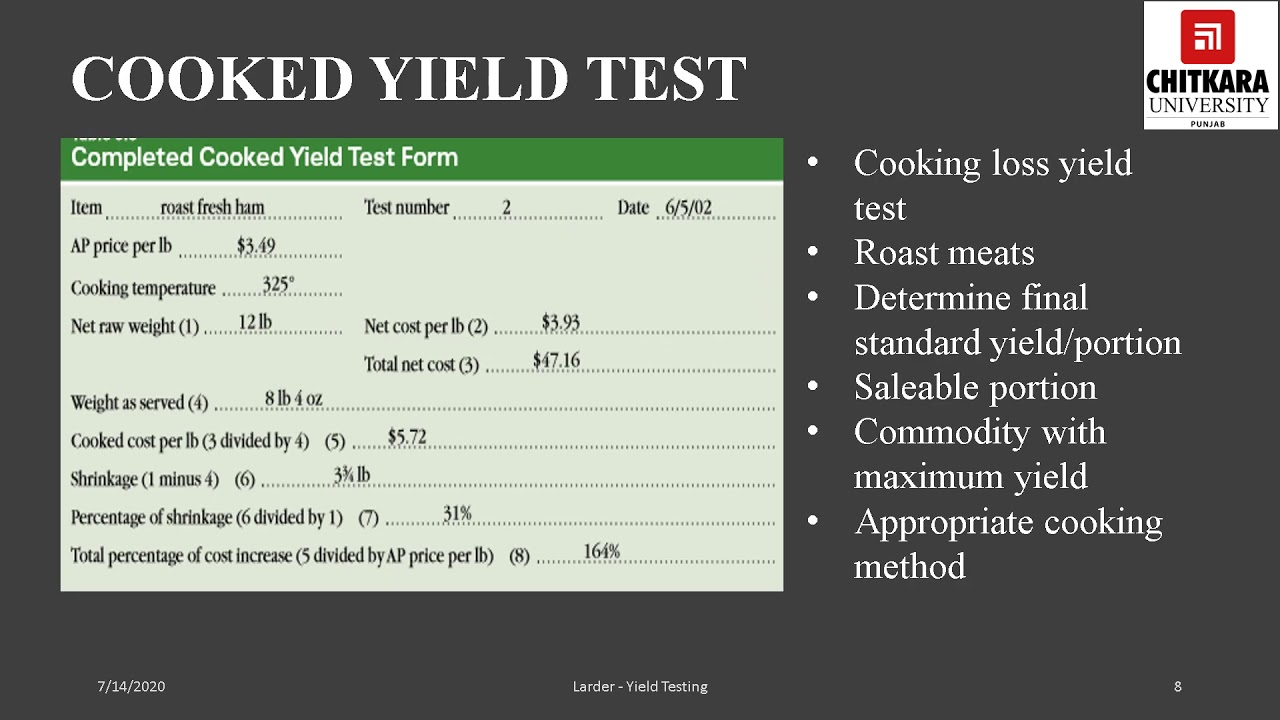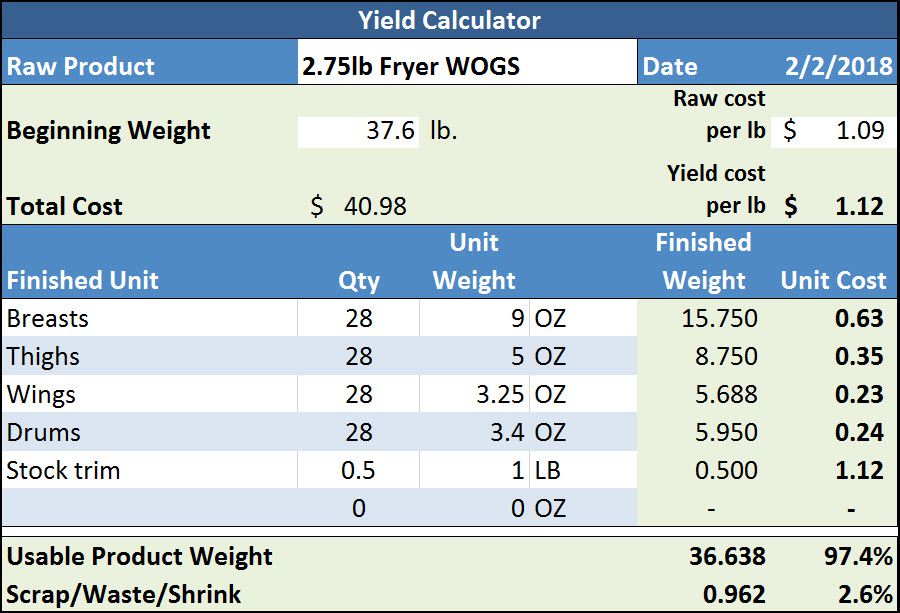What Is Yield in Cooking: Understanding the Concept and Importance
Cooking is an art that involves various techniques and skills. One important aspect of cooking that often goes unnoticed is the concept of yield. Yield refers to the quantity or amount of a particular ingredient or dish produced after cooking or processing. Understanding yield is crucial for both home cooks and professional chefs as it helps in recipe scaling, cost management, and overall kitchen efficiency. In this article, we will delve deeper into the concept of yield in cooking and explore its significance.

Yield test
1. What is Yield?
Yield, in cooking, refers to the final output or quantity of a food item or dish after it has been prepared or cooked. It is typically measured in terms of weight, volume, or number of servings. Yield can be determined for various ingredients, such as fruits, vegetables, grains, meats, and even entire recipes. It is essential to have a clear understanding of yield to ensure accurate measurements and consistent results in the kitchen.
2. Calculating Yield:
To calculate the yield of a recipe or ingredient, you need to determine the starting amount and the final amount after cooking. Here's a simple formula to calculate yield:
Yield = Final Amount / Starting Amount * 100
For example, if you start with 500 grams of chicken and end up with 400 grams after cooking, the yield would be:
Yield = 400 / 500 * 100 = 80%
Calculating yield allows you to adjust recipes according to the desired quantity or number of servings.
3. Importance of Yield in Cooking:
3.1 Recipe Scaling and Adjustments:
Understanding yield is crucial when you need to scale up or down a recipe. If you want to double a recipe to serve more people, you need to calculate the new ingredient quantities based on the original yield. On the other hand, if you want to reduce a recipe to serve fewer people, yield calculations help in adjusting the ingredients accordingly.
3.2 Cost Management:
Yield plays a vital role in managing costs in commercial kitchens or any food service establishment. By accurately calculating the yield of ingredients, chefs and restaurant owners can estimate the cost per serving and determine portion sizes. This knowledge helps in optimizing resources, minimizing waste, and maximizing profitability.
3.3 Consistent Results:
Achieving consistent results in cooking is essential, especially in professional kitchens. Knowing the yield of ingredients ensures that the flavor, texture, and presentation of a dish remain consistent, regardless of the batch size. Consistency is vital for creating signature dishes and maintaining customer satisfaction.
4. Factors Affecting Yield:
4.1 Cooking Method:
Different cooking methods can affect the yield of ingredients. For example, boiling vegetables may result in a higher yield compared to roasting or sautéing, where some moisture is lost.
4.2 Trimming and Waste:
The way ingredients are prepared, such as trimming fat from meat or removing seeds from fruits, can impact the final yield. Waste generated during ingredient preparation should be taken into account while calculating yield.
4.3 Moisture Loss:
During cooking, moisture loss occurs, which can affect the yield. It is crucial to consider this factor, especially when working with meats or other ingredients that release significant moisture during cooking.

Food Cost Yield Calculator
5. Practical Tips for Yield Optimization:
5.1 Proper Measurement Techniques:
Accurate measurements of ingredients are essential for calculating yield correctly. Use standardized measuring tools and techniques to ensure consistency.
5.2 Documentation and Record-Keeping:
Maintaining detailed records of ingredient quantities, yield calculations, and adjustments made to recipes helps in tracking and improving yield over time.
5.3 Test Runs and Trials:
Conducting test runs and trials of recipes can help identify any variations in yield and make necessary adjustments to achieve desired results.
Yield is a fundamental concept in cooking that influences recipe scaling, cost management, and consistency. By understanding and calculating yield accurately, cooks and chefs can optimize their resources, control costs, and deliver consistent and delicious dishes. So, the next time you step into the kitchen, consider the concept of yield to enhance your cooking skills and create culinary masterpieces.